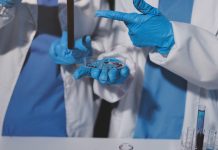A team of researchers at UNIST led by led by Professor Jungki Ryu in the School of Energy and Chemical Engineering have developed new biofuel system that uses lignin found in biomass for the production of hydrogen. The system decomposes lignin with a molybdenum (Mo) catalyst to produce high value-added compounds, and the electrons extracted in the process effectively produce hydrogen. The findings of this research have been published in ACS Catalysis.
Through the study, Professor Ryu and his research team have developed a new biofuel system that uses lignin as an electron donor in a way to reduce the overall inefficiency of the oxygen evolution reaction (OER). This is the principle of using molybdenum-based inexpensive metal catalysts (PMA) to break down lignin at low temperatures, and extract the electrons produced in the process to produce hydrogen. The new device has been designed to move electrons from lignin, along the wire to the electrode where the hydrogen evolution reaction (HER) occurs. “With this new system, we can produce hydrogen with less energy (overvoltage) than conventional water electrolysis, as there is no need for oxygen reactions, requiring high energy and precious metal catalysts. The new system was capable of producing hydrogen at a much lower potential (0.95 volts),” says Hyeonmyeong Oh (Combined M.S/Ph.D. of Energy and Chemical Engineering, UNIST), the first author of the study. “The new biofuel system is a technology that produces hydrogen and valuable chemicals using cheap catalysts and low voltages instead of expensive catalysts such as platinum (Pt),” says Professor Ryu. “Our work is also significant, as it presents a new way to replace oxygen-producing reactions in the electrolysis of water.”
Researchers Develop New Biofuel System for H2 Production
Advertisement
































